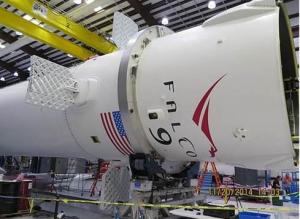 Let’s face it: Elon Musk is probably a time traveller sent back to help us leave earth behind and achieve the next phase of human evolution. The inventor and entrepreneur issued a minor tweet storm today, in which he detailed a new SpaceX program to test the function of “X-Wing” style grid fins that could help spacecraft navigate upon re-entry after delivering personnel or cargo to an orbiting space station.
Let’s face it: Elon Musk is probably a time traveller sent back to help us leave earth behind and achieve the next phase of human evolution. The inventor and entrepreneur issued a minor tweet storm today, in which he detailed a new SpaceX program to test the function of “X-Wing” style grid fins that could help spacecraft navigate upon re-entry after delivering personnel or cargo to an orbiting space station.Here, in chronological order, are Musk’s own tweets describing the tech, which, also includes an autonomous seafaring drone spaceport platform, to give them a landing pad that can hold its position within three meters’ distance even in the heart of a raging storm
The SpaceX reusable rocket program has been progressing with varying results, including an explosion over Texas back in August. While the incident didn’t result in any injury or even “near injuries,” Musk conceded in a tweet that this was evidence that “[r]ockets are tricky.” An earlier test flight from this summer involving an ocean splashdown was considered more successful, proving that the Space X Falcon 9 booster could re-enter earth’s atmosphere, restart its engines, deploy its landing legs and make a touch down at “near zero velocity.”
These new modifications to the rocket should make atmospheric navigation easier, with each fin operating independently to help control the craft’s angle, speed and vector. They also fold up and stow during takeoff, so they don’t add any additional drag. The autonomous spaceports are essentially seafaring landing pads, which can help make sure that re-entering craft are far from any populated areas in the event of any incident, while still providing a stable target for landing spaceships.
All of which is to say, once again, that Elon Musk and everything he does is pretty much amazing. Case in point: This is his last tweet before discussing these new Space X tests: